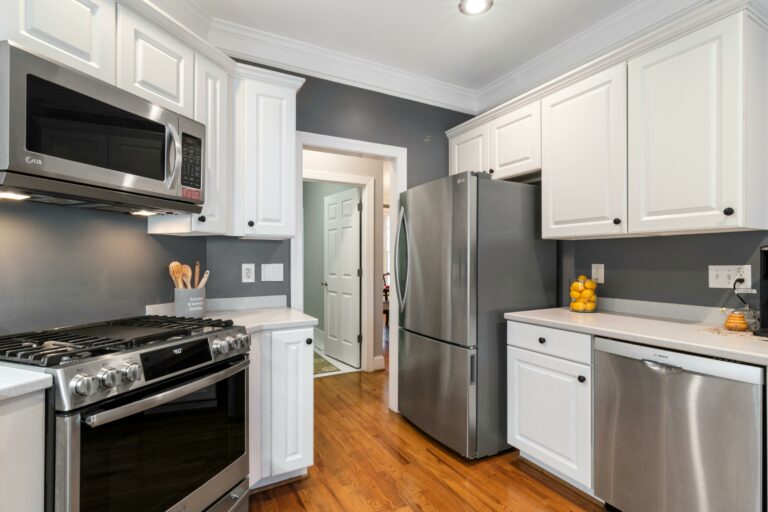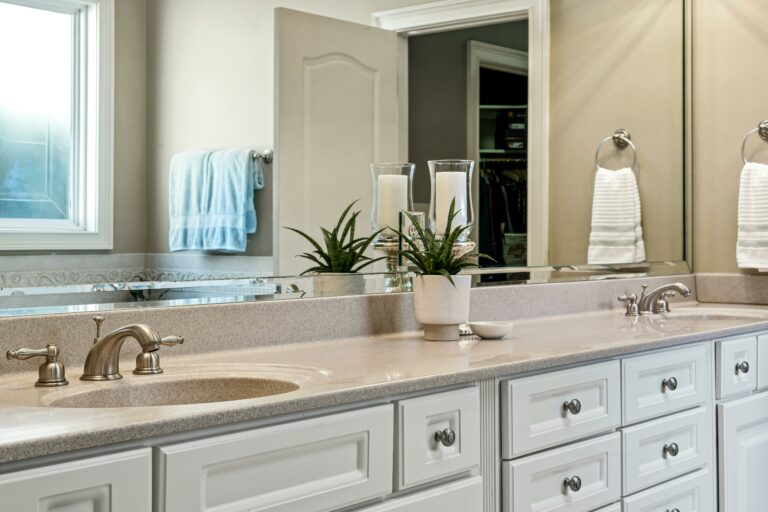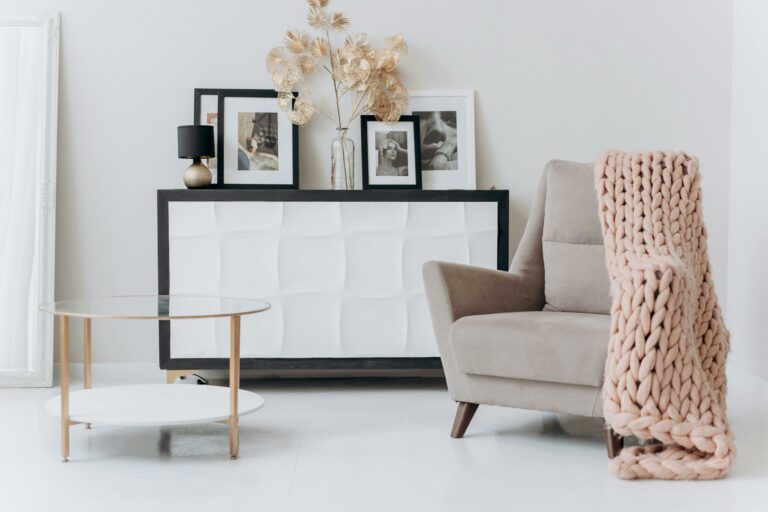Designing a Functional Home Office: Tips for Work-from-Home Professionals
Designing a functional home office is becoming more relevant than ever as an increasing number of professionals are opting to work from the comfort of their own homes. Whether you are a remote employee, freelancer, or small business owner, creating a productive and comfortable workspace is essential for maximizing your efficiency and overall well-being.
Working from home offers numerous benefits that can significantly impact your work-life balance and productivity. However, to fully reap these advantages, it is crucial to set up a home office that caters to your specific needs and preferences. From choosing the right space to selecting ergonomic furniture and incorporating effective organizational systems, there are several key factors to consider.
Table of Contents
- 1 Tips for Work-from-Home
- 2 Benefits of Work from Home
- 3 Designing a Functional Home Office
- 4 Creating an Organized Workspace
- 5 Setting Up the Right Equipment
- 6 Establishing Work-Life Balance
- 7 Improving Productivity
- 8 Maximizing Comfort
- 9 Considering Mental Well-being
- 10 Conclusion
- 11 Frequently Asked Questions
Tips for Work-from-Home

In this article, we will explore the various aspects of designing a functional home office that promotes productivity, comfort, and overall well-being. We will provide you with practical tips and insights on how to create an ideal workspace tailored to your work requirements. Whether you have a dedicated room or a small corner in your living space, we will guide you through the process of transforming it into a productive and inviting work area.
So, whether you are just starting to work from home or looking to enhance your existing home office setup, read on to discover valuable tips and strategies that will help you design a functional and inspiring workspace. Let’s dive in!
Benefits of Work from Home
One of the biggest trends in recent years has been the rise of remote work or working from the comfort of one’s home. This shift in the way we work has been fueled by advancements in technology, and it offers employees a host of benefits. Let’s take a closer look at some of the benefits of work from home.
Increased Performance
Working from home has been found to have a positive impact on an employee’s performance. Studies have shown that remote workers are, on average, 13% more productive compared to their in-office counterparts. This increase in performance can be attributed to several factors, such as fewer distractions, a more comfortable work environment, and the ability to set their own schedule.
Increased Productivity
Another benefit of work from home is the potential for increased productivity. Research suggests that remote work is associated with 10-20% lower productivity compared to in-person work. However, this statistic doesn’t tell the whole story. In fact, 77% of remote workers report increased productivity when working remotely. Additionally, 65% of employers have reported increased productivity with their remote workforce. These findings indicate that, while there may be some initial adjustments required, remote workers can be just as, if not more, productive than their in-office counterparts.
Flexible Working Hours
One of the most significant advantages of working from home is the flexibility it offers in terms of working hours. Remote workers have the freedom to set their own schedule and work when they are most productive. This flexibility can be particularly beneficial for individuals who have other commitments, such as caring for children or elderly family members. It allows them to find a balance between their personal and professional lives, leading to increased job satisfaction and overall well-being.
In conclusion, working from home provides several benefits for employees. It not only increases performance and productivity but also offers flexibility in terms of working hours. As remote work continues to gain popularity, more companies are embracing this new way of working, recognizing the advantages it brings for both employees and employers.
Designing a Functional Home Office
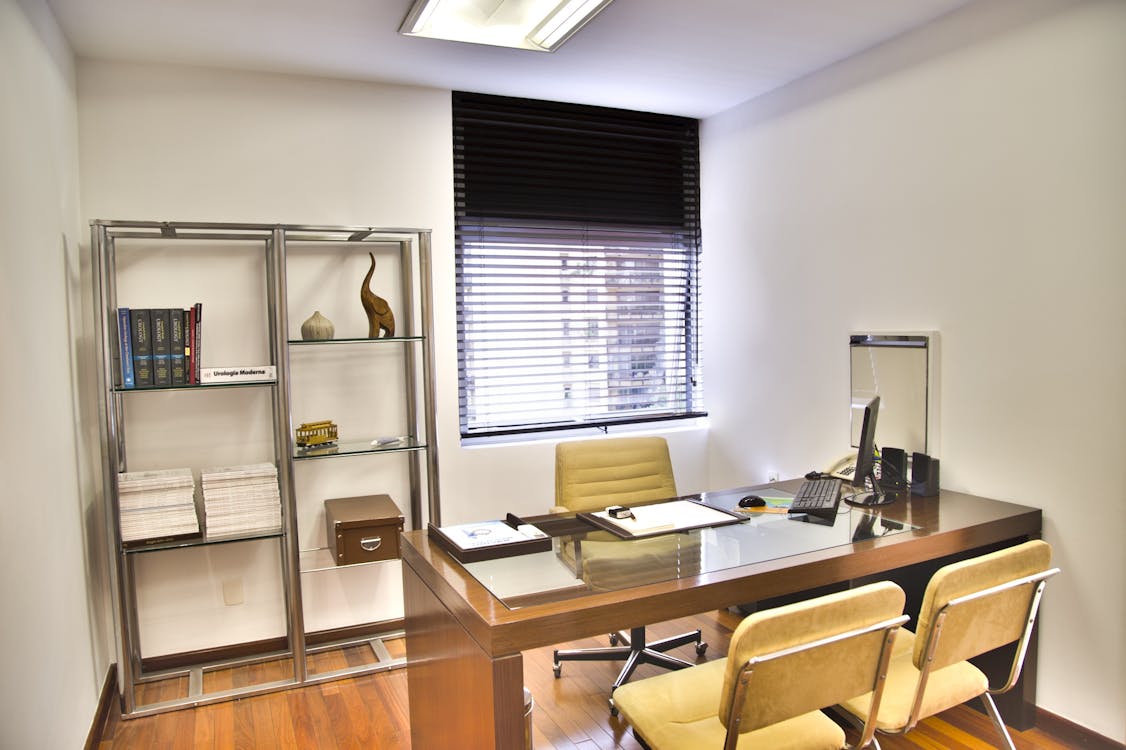
Working from home has become increasingly popular, and designing a functional home office is essential for creating a productive work environment. Whether you’re a full-time remote worker or just need a dedicated space for occasional work, a well-designed home office can make all the difference in your productivity and work-life balance.
Choosing the Right Space
When designing a home office, it’s crucial to choose the right space. Here are a few considerations to keep in mind:
- Location: Select a space that is separate from your living areas if possible. This helps create a distinction between work and personal life, allowing you to maintain focus and avoid distractions.
- Size: Consider the size of the space you have available. Ensure that it is large enough to accommodate all your essential office equipment and furniture comfortably.
- Natural Light: Look for a space with ample natural light. Natural light not only enhances mood and creativity but also reduces eye strain and fatigue. If your chosen space lacks natural light, consider adding task lighting to supplement.
Ergonomic Furniture
Ergonomic furniture plays a vital role in designing a functional home office. Investing in ergonomically designed furniture not only promotes good posture but also improves comfort and reduces the risk of musculoskeletal issues.
Here are a few key pieces of ergonomic furniture to consider:
- Ergonomic Chair: Choose a chair that offers proper lumbar support, adjustable height, and a comfortable seat cushion. Additionally, opt for a chair with armrests that allow for proper alignment of the wrists and forearms.
- Height-Adjustable Desk: A height-adjustable desk allows you to switch between sitting and standing positions throughout the day, promoting better blood circulation and reducing back pain. Look for a desk that offers ample workspace and adjustable height settings.
- Keyboard and Mouse: Consider using an ergonomic keyboard and mouse that helps maintain a neutral wrist position. These can minimize the risk of repetitive strain injuries and improve overall comfort while typing.
Good Lighting and Ventilation
Lighting and ventilation are often overlooked aspects when designing a home office, but they have a significant impact on your overall well-being and productivity.
Here’s why they matter:
- Lighting: Good lighting is crucial for reducing eye strain and maintaining focus. Position your desk near a window if possible to take advantage of natural light. Additionally, consider using layered lighting solutions, such as a desk lamp and overhead lighting, to create a well-lit space.
- Ventilation: Proper ventilation is essential for maintaining a comfortable working environment. Choose a space with adequate airflow and consider using a fan or air purifier if needed. Fresh air can boost your concentration and productivity levels.
In conclusion, designing a functional home office is key to creating a productive and comfortable work environment. Choosing the right space, incorporating ergonomic furniture, and paying attention to lighting and ventilation can make a significant difference in your overall well-being and work performance. By considering these factors, you can create a home office that meets your individual needs and maximizes your productivity.
Creating an Organized Workspace
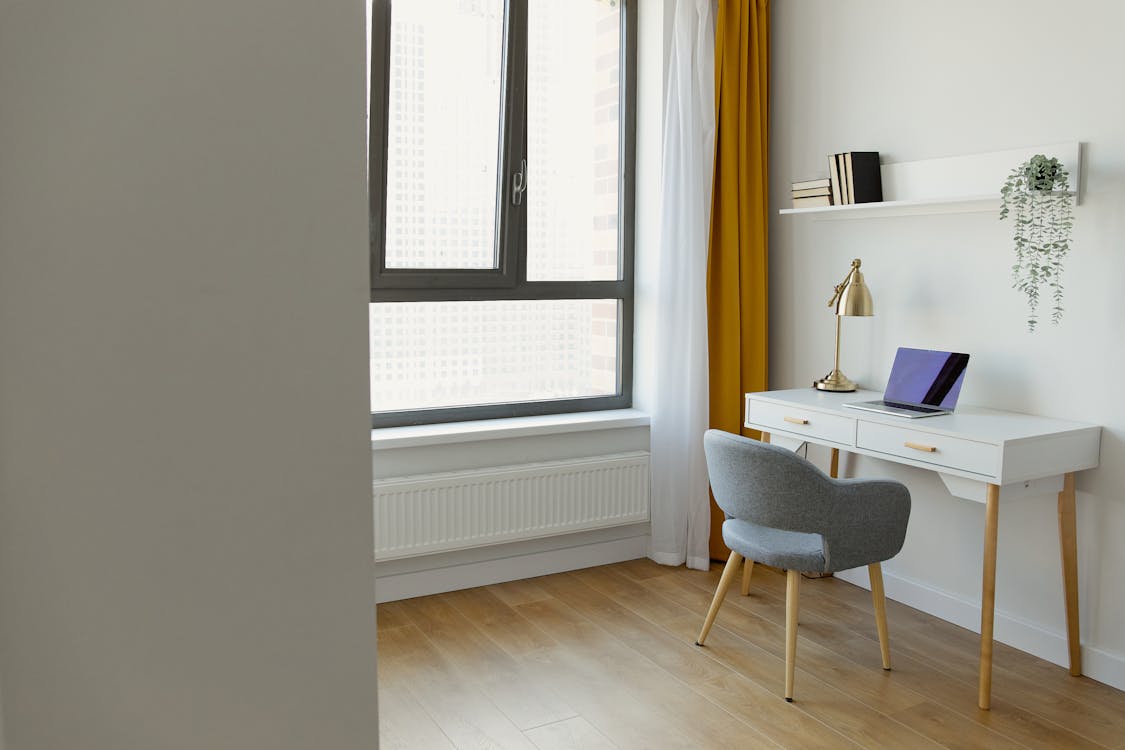
Having an organized workspace is essential for productivity and peace of mind. When our physical environment is clutter-free and well-organized, our minds can focus more easily, and we can work efficiently. Whether you work from home or in an office, creating an organized workspace is a game-changer. In this article, we will explore three key aspects of creating an organized workspace: decluttering, storage solutions, and organizational systems.
Decluttering: Clearing the Path to Productivity
Before diving into the nitty-gritty of organizing your workspace, it’s crucial to declutter. Clutter can be a significant source of distraction and overwhelm. So, roll up your sleeves and get ready to tackle the mess!
Here are a few tips for work-from-home to help you declutter your workspace:
- Start small: Begin with a single area or category, such as your desk drawers or bookshelf.
- Sort and categorize: Divide your belongings into categories, such as “keep,” “donate,” and “discard.”
- Get rid of what you don’t need: Be ruthless in letting go of items you no longer use or that don’t serve a purpose in your workspace.
- Create a system for incoming items: Establish a routine or process for handling new items that enter your workspace to prevent future clutter buildup.
Decluttering your workspace not only clears physical space but also creates mental space for increased focus and productivity. Embrace the freedom that comes with letting go of unnecessary items and creating a clean slate for your work area.
Storage Solutions: Maximizing Space and Efficiency
Once you have decluttered your workspace, it’s time to consider storage solutions to keep everything in order. Effective storage solutions help you optimize space and improve efficiency.
Here are some storage ideas to consider:
- Shelves and Cabinets: Install shelves or cabinets above your desk or on nearby walls to maximize vertical space and provide easy access to frequently used items.
- Desk Organizers: Utilize desk organizers such as pen holders, file holders, and trays to keep stationery and paperwork neatly arranged.
- Filing Systems: Implement a filing system to store documents and papers systematically. Use labeled folders, binders, or digital formats to keep everything organized and easily accessible.
- Storage Containers: Invest in storage containers such as bins, baskets, or drawer dividers to keep smaller items in their designated spaces.
Remember, the key to effective storage is finding a home for everything and keeping it consistently organized. Take the time to find storage solutions that suit your specific needs and style, ensuring that everything has its place.
Organizational Systems: Putting It All Together
To maintain an organized workspace in the long run, it’s essential to establish organizational systems that work for you. These systems serve as guidelines for keeping your workspace tidy and ensuring that everything remains in its rightful place.
Here are tips for work-from-home to help you create effective organizational systems:
- Develop a daily maintenance routine: Spend a few minutes at the end of each day tidying up your workspace and putting things back in their designated spots.
- Make use of labels: Labeling containers, folders, and shelves makes it easier to locate items quickly and maintain order.
- Create a workflow system: Determine the flow of your work and arrange your workspace accordingly. For example, position essential items within arm’s reach and store infrequently used items further away.
By implementing these organizational systems, you will provide structure to your workspace. It becomes easier to maintain an organized environment, allowing you to focus on your tasks instead of searching for misplaced items.
Remember, creating an organized workspace is an ongoing process. It requires commitment and consistency. However, the benefits of work from home are well worth the effort. So, roll up your sleeves, declutter, find storage solutions that work for you, and establish organizational systems. Soon enough, you’ll find yourself working in a workspace that promotes productivity, creativity, and peace of mind.
Setting Up the Right Equipment

When it comes to setting up your workspace, having the right equipment is crucial for productivity and efficiency. Whether you’re working from home or in a traditional office setting, having reliable technology and tools can make all the difference in your workflow. In this section, we’ll explore three key components of setting up the right equipment: a reliable internet connection, quality computer and accessories, and efficient communication tools. Let’s dive in!
Reliable Internet Connection
In today’s digital age, a fast and stable internet connection is a non-negotiable requirement for any work environment. Whether you’re attending virtual meetings, accessing cloud-based applications, or simply sending emails, a reliable internet connection ensures that you stay connected and productive throughout the day.
Here are a few tips for work-from-home to ensure you have a reliable internet connection:
- Choose a reputable internet service provider (ISP) that offers high speeds and reliable service in your area.
- Invest in a wired Ethernet connection for your computer whenever possible, as it tends to be more stable than Wi-Fi.
- Consider having a backup internet connection, such as a mobile hotspot or a secondary ISP, to minimize downtime in case of an outage.
Remember, a strong and reliable internet connection is the backbone of your virtual workspace, so make sure you prioritize this aspect when setting up your equipment.
Quality Computer and Accessories
Your computer is your primary work tool, so it’s essential to invest in a quality machine that meets your needs.
Here are a few factors to consider when selecting a computer and its accessories:
- Processing power: Depending on your work requirements, choose a computer with a processor that can handle your workload efficiently.
- RAM and storage: Sufficient RAM and storage are crucial for multitasking and storage of files and documents.
- Display and peripherals: Opt for a high-resolution display and ergonomic peripherals such as a comfortable keyboard and mouse to enhance your overall working experience.
When it comes to computer accessories, invest in high-quality equipment that complements your computer. Consider items such as external hard drives for data backups, a docking station for easy connectivity, and a comfortable headset for virtual meetings and calls.
Efficient Communication Tools
In today’s collaborative work environment, efficient communication tools are essential for effective teamwork.
Here are a few tools that can streamline communication and improve collaboration:
- Video conferencing software: Using platforms like Zoom or Microsoft Teams allows you to connect with colleagues and clients seamlessly, regardless of distance.
- Instant messaging apps: Tools like Slack or Microsoft Teams enable quick and efficient communication among team members, reducing the need for lengthy email threads.
- Project management software: Platforms like Asana or Trello help teams stay organized, assign tasks, and track project progress in real-time.
By utilizing these communication tools, you can enhance collaboration and maintain clear communication channels with your team, regardless of location.
Remember, setting up the right equipment goes beyond hardware and software. It’s about creating an environment that supports your workflow and allows you to perform at your best. With a reliable internet connection, quality computer and accessories, and efficient communication tools, your workspace will be optimized for productivity and success.
Establishing Work-Life Balance

In today’s fast-paced world, finding a balance between work and personal life can be a challenge. The demands of our careers often spill over into our personal time, leaving us feeling overwhelmed and stressed. However, it is crucial to establish a healthy work-life balance to maintain our well-being and overall happiness.
Here are some strategies to help you achieve that balance:
Creating Boundaries
Creating clear boundaries between work and personal life is essential for maintaining a healthy balance.
Here are a few tips for work-from-home to help you establish those boundaries:
- Designate a workspace: Set up a dedicated workspace in your home where you can focus on work. This will help create a physical separation between your professional and personal life.
- Establish working hours: Define specific working hours and communicate them with your colleagues or clients. Stick to these hours as much as possible to avoid excessive work encroaching on your personal time.
- Turn off notifications: Switch off work-related notifications during your non-working hours. This will help you disconnect and fully engage with your personal activities without distractions.
Establishing a Routine
Creating a structured routine can significantly contribute to work-life balance. Here are some suggestions to establish a routine that works for you:
- Set priorities: Determine your most important tasks and allocate time for them accordingly. Prioritizing your work will help you manage your time effectively and avoid feeling overwhelmed.
- Schedule self-care activities: Make sure to include self-care activities, such as exercise, meditation, or hobbies, in your daily routine. These activities are crucial for recharging and taking care of your mental and physical well-being.
- Practice time blocking: Segment your day into blocks of time dedicated to specific tasks or activities. This method can help you stay organized and focused, preventing work from consuming your entire day.
Taking Breaks
Taking regular breaks throughout the workday is vital for maintaining productivity and preventing burnout.
Here are some tips for work-from-home incorporating breaks into your daily routine:
- Schedule short breaks: Set aside short breaks every couple of hours to rest and recharge. Use this time to stretch, take a walk, or engage in a non-work-related activity.
- Unplug during lunch: Avoid eating at your desk or continuing to work during your lunch break. Instead, step away from your workspace and engage in a relaxing activity to clear your mind.
- Take vacations: Plan and take regular vacations to disconnect completely from work. Use this time to relax, spend quality time with loved ones, or explore new hobbies.
Remember, achieving work-life balance is an ongoing process that requires effort and self-awareness. By creating boundaries, establishing a routine, and taking regular breaks, you can pave the way for a more balanced and fulfilling life. So, make a commitment to prioritize your well-being and enjoy the benefits of work from home.
“The challenge is not to manage time, but to manage ourselves.” – Stephen R. Covey
Improving Productivity

In today’s fast-paced world, productivity is a highly sought-after skill. Whether it’s at work or in personal projects, we all want to accomplish tasks efficiently and effectively. But with so many distractions and demands on our time, it can sometimes feel like an uphill battle. Luckily, there are strategies and techniques that can help us improve our productivity and achieve more each day. In this article, we will explore three key areas to focus on for boosting productivity: minimizing distractions, time management techniques, and goal setting.
Minimizing Distractions
One of the biggest challenges to productivity is distractions. It’s all too easy to get sidetracked by social media notifications, emails, or other interruptions throughout the day. To combat this, it’s essential to create an environment that minimizes distractions and allows us to focus on the task at hand.
Here are some benefits of work from home to consider:
- Designate a distraction-free zone: Create a dedicated workspace where you can minimize distractions. This could be a separate room, a quiet corner of your home, or even a coffee shop where you can find some solitude.
- Turn off notifications: Disable notifications on your phone or computer for non-essential apps. This will help reduce the temptation to constantly check for updates and keep your attention focused.
- Establish set times for communication: Instead of constantly checking emails or responding to messages throughout the day, set specific times to handle communication. This way, you can concentrate on your work without constant interruptions.
Time Management Techniques
Effective time management is a crucial factor in improving productivity. By managing our time wisely, we can make the most of each day and accomplish more in less time.
Here are some time management techniques to try:
- Prioritize tasks: Start each day by identifying your most important tasks and tackling them first. By focusing on high-priority items, you can make significant progress on essential projects before getting caught up in less crucial to-do items.
- Use the Pomodoro Technique: The Pomodoro Technique involves breaking your work into planned intervals, typically 25 minutes of focused work followed by a short break. This technique helps maintain focus and prevents burnout.
- Set deadlines and stick to them: Establish deadlines for your tasks and hold yourself accountable to meet them. Breaking projects into smaller, manageable deadlines can help you stay on track and complete projects on time.
Goal Setting
Setting clear goals is essential for improving productivity. When we have a clear direction and purpose, it becomes easier to prioritize tasks and stay focused.
Here are some tips for work-from-home for effective goal setting:
- Set SMART goals: SMART stands for Specific, Measurable, Achievable, Relevant, and Time-bound. When setting goals, make sure they meet these criteria. This will help create a clear roadmap and provide a sense of direction.
- Break goals into smaller tasks: Large goals can be overwhelming. Break them down into smaller, more manageable tasks to make them less daunting. This will help you stay motivated and make progress consistently.
- Reflect and adjust: Regularly review your goals and assess your progress. If necessary, make adjustments to your approach or timeline. Reflecting on your goals and making necessary changes will keep you aligned with your objectives.
Improving productivity is an ongoing process that takes time and practice. By minimizing distractions, implementing effective time management techniques, and setting clear goals, you can enhance your productivity and achieve more each day. So, why wait? Start implementing these strategies today and watch your productivity soar.
Also Read : Minimalist Home Office Design: Boosting Productivity and Focus
Maximizing Comfort
When it comes to maximizing comfort, there are several factors to consider. From ergonomic seating to maintaining proper posture and incorporating regular exercise, taking proactive steps can make a significant difference in how you feel throughout the day. By focusing on these areas, you can create a more comfortable and enjoyable environment, both at work and at home.
Ergonomic Seating
One of the key factors in maximizing comfort is investing in ergonomic seating. Traditional chairs may not provide the necessary support for long periods of sitting, leading to discomfort and potential health issues down the line. Ergonomic chairs, on the other hand, are designed with your comfort and well-being in mind. They offer various adjustable features that allow you to customize your seating position, providing proper support for your back, neck, and legs.
Some key features to look for in an ergonomic chair include:
- Adjustable seat height: This allows you to position your feet flat on the floor, promoting good blood circulation and reducing strain on your lower back.
- Lumbar support: A chair with built-in lumbar support helps maintain the natural curve of your lower back, preventing slumping and supporting good posture.
- Armrests: Adjustable armrests that can be positioned to support your arms at a 90-degree angle can prevent shoulder and neck discomfort.
By investing in a high-quality ergonomic chair, you can significantly enhance your comfort and reduce the risk of developing musculoskeletal issues associated with prolonged sitting.
Proper Posture
Maintaining proper posture is crucial for maximizing comfort. Whether you’re sitting or standing, good posture helps distribute the weight of your body evenly, reducing strain on your muscles and joints.
Here are some tips for work-from-home maintaining proper posture:
- Sit up straight: Keep your back straight, aligning your ears, shoulders, and hips in a vertical line.
- Support your lower back: Use a cushion or a lumbar roll to support the natural curve of your lower back when sitting for long periods.
- Keep your feet flat on the floor: Avoid crossing your legs or letting them hang in the air. Rest your feet flat on the floor or use a footrest to maintain proper alignment.
Making a conscious effort to maintain proper posture throughout the day can alleviate discomfort and prevent long-term health issues.
Regular Exercise
Regular exercise is not only essential for overall health and well-being, but it also plays a significant role in maximizing comfort. Engaging in physical activity helps improve circulation, strengthen muscles, and reduce tension and stiffness. Incorporating regular exercise into your routine can also boost your energy levels and improve your mood.
Here are some simple ways to incorporate exercise into your daily life:
- Take breaks and stretch: Set a timer to remind yourself to take short breaks every hour to stretch your muscles and get your blood flowing.
- Go for a walk: Take a short walk during your lunch break or after work. Walking is a low-impact exercise that can help improve circulation and relieve muscle tension.
- Try desk exercises: There are various exercises you can do right at your desk, such as shoulder rolls, neck stretches, and leg extensions.
Remember, even small bursts of physical activity throughout the day can have a positive impact on your overall comfort and well-being. Incorporating ergonomic seating, maintaining proper posture, and engaging in regular exercise are all essential steps to maximize comfort. By focusing on these areas, you can create a more comfortable and supportive environment for your body, leading to increased productivity and overall well-being.
Considering Mental Well-being
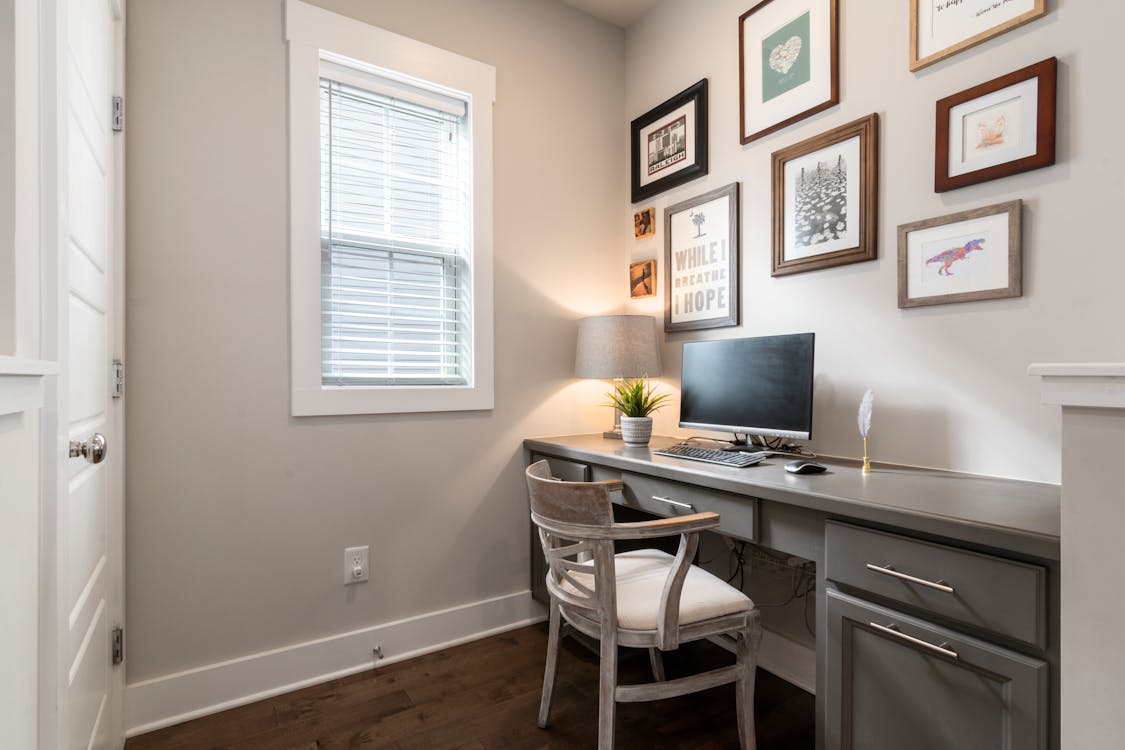
In today’s fast-paced and often stressful world, taking care of our mental well-being is more important than ever. Creating a calming space in our homes and workplaces, incorporating plants into our environment, and taking regular mental health breaks can all contribute to a healthier and more balanced mindset. Let’s delve into each of these practices and explore how they can positively impact our mental well-being.
Designing a Calming Space
Designing a calming space is essential for creating a sanctuary where we can relax and unwind. Whether it’s a corner of your living room, a dedicated office space, or a cozy nook in your bedroom, having a designated area for relaxation can have a profound effect on your mental state.
Here are some tips for work-from-home for designing a calming space:
- Colors: Choose soothing colors such as soft blues, greens, and neutrals. These colors have a calming effect and can help create a serene atmosphere.
- Lighting: Opt for soft, warm lighting instead of harsh overhead lights. Natural light is ideal, so try to position your space near a window or incorporate natural light sources, like skylights or light tubes.
- Comfortable Furniture: Invest in comfortable furniture that supports good posture and helps you feel relaxed. Consider adding cushions, throws, and cozy blankets for added comfort.
- Clutter-Free Environment: Keep your calming space clutter-free and organized. Clutter can be visually and mentally overwhelming, so make sure to tidy up regularly to maintain a peaceful atmosphere.
Incorporating Plants
Bringing nature indoors by incorporating plants into your living or work environment can have a significant impact on your mental well-being. Research has shown that having plants in your surroundings can:
- Reduce Stress: Being around plants has been proven to lower stress levels and increase feelings of calmness and relaxation.
- Improve Air Quality: Plants help purify the air by absorbing carbon dioxide and releasing oxygen. This can lead to improved air quality and better overall health.
- Increase Productivity: Studies have shown that having plants in the office can increase productivity and creativity while reducing fatigue and improving focus.
So, whether you choose to have a few potted plants on your desk or create a mini indoor garden, incorporating plants into your environment can be a simple yet effective way to enhance your mental well-being.
Taking Mental Health Breaks
In our busy lives, it’s crucial to prioritize regular mental health breaks to recharge and de-stress. Here are a few ideas for incorporating mental health breaks into your daily routine:
- Take Short Walks: Go for a short walk during your lunch break or whenever you need a break from work or daily responsibilities. Getting some fresh air and moving your body can help clear your mind and reduce stress.
- Practice Mindfulness: Take a few moments throughout the day to practice mindfulness. This can be as simple as focusing on your breath, taking note of your surroundings, or engaging in a short meditation or relaxation exercise.
- Engage in Hobbies: Dedicate time to activities that bring you joy and help you unwind. Whether it’s reading, painting, gardening, or playing a musical instrument, finding time for hobbies can be therapeutic and rejuvenating.
Prioritizing our mental well-being is essential for maintaining a healthy and balanced life. By creating a calming space, incorporating plants into our environment, and taking regular mental health breaks, we can enhance our overall well-being and cultivate a positive mindset. So, let’s make a conscious effort to prioritize our mental health and create spaces and routines that nurture our well-being.
Conclusion
In conclusion, designing a functional home office is essential tips for work-from-home professionals to create a productive and comfortable workspace. By carefully selecting the right space, incorporating ergonomic furniture, optimizing lighting and ventilation, decluttering and implementing storage solutions, and setting up the necessary equipment, professionals can establish an organized and efficient workspace. Furthermore, creating boundaries, establishing a routine, and taking breaks help maintain a healthy work-life balance and improve productivity. Maximizing comfort through ergonomic seating, maintaining proper posture, and incorporating regular exercise also contribute to productivity and overall well-being.
Additionally, considering mental well-being by designing a calming space, incorporating plants, and taking mental health breaks is crucial for maintaining a positive and balanced work environment. By implementing these tips, professionals can create a home office that promotes focus, productivity, and overall well-being.
Remember, a well-designed home office is key to unlocking your full potential as a work-from-home professional. To discover more inspiring design ideas and gain valuable insights into architecture, home, and interior design, visit Arkitecture Today, your go-to online blog for daily dose of creative inspiration and design expertise. Click here to explore the world of architecture and design with Arkitecture Today!
Frequently Asked Questions
- What are the essential elements of a functional home office?The essential elements of a functional home office include a comfortable desk and chair, proper lighting, adequate storage solutions, a reliable computer and internet connection, and a quiet and dedicated workspace.
- How can I create a productive work environment in my home office?To create a productive work environment in your home office, minimize distractions, establish a routine, set clear boundaries, organize your workspace, and create a visually pleasing and motivating atmosphere.
- What are some ergonomic considerations when designing a home office?When designing a home office, consider ergonomics by choosing an adjustable and supportive chair, positioning your monitor at eye level, using a keyboard and mouse that promote neutral wrist positions, and incorporating standing or sitting options.
- How can I maximize space in a small home office?To maximize space in a small home office, utilize vertical storage options like wall shelves or cabinets, invest in multi-functional furniture, implement good organization systems, and keep your workspace clutter-free.
- Are there any technology recommendations for a functional home office?Yes, some technology recommendations for a functional home office include investing in a high-quality printer and scanner, using noise-canceling headphones or a good-quality microphone for virtual meetings, and having a backup power source for uninterrupted work.




